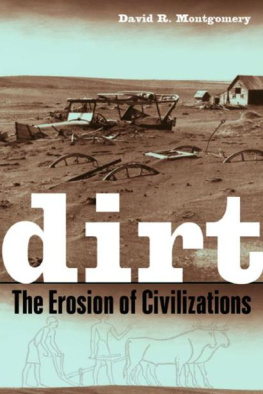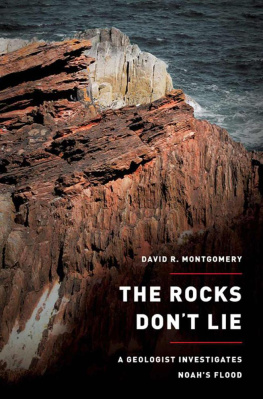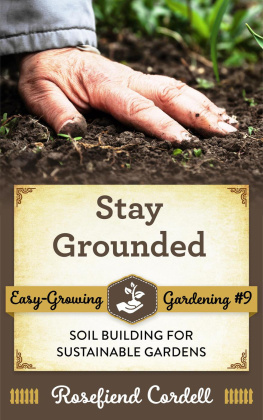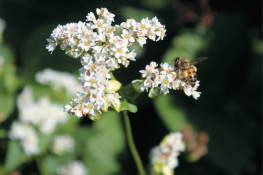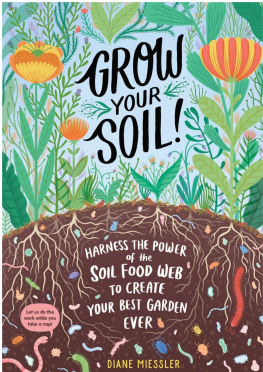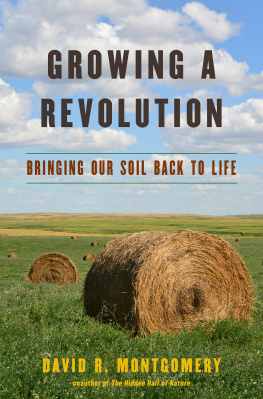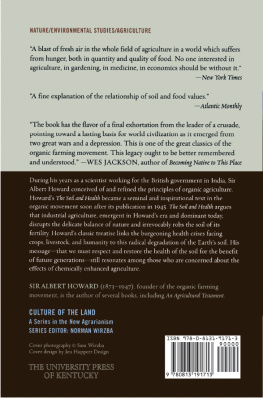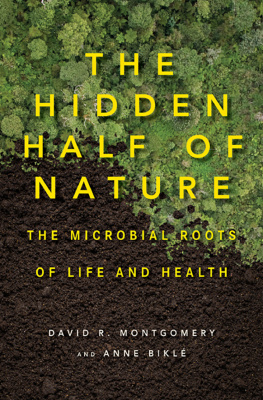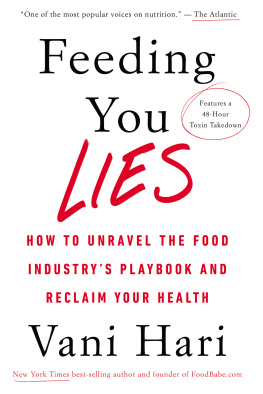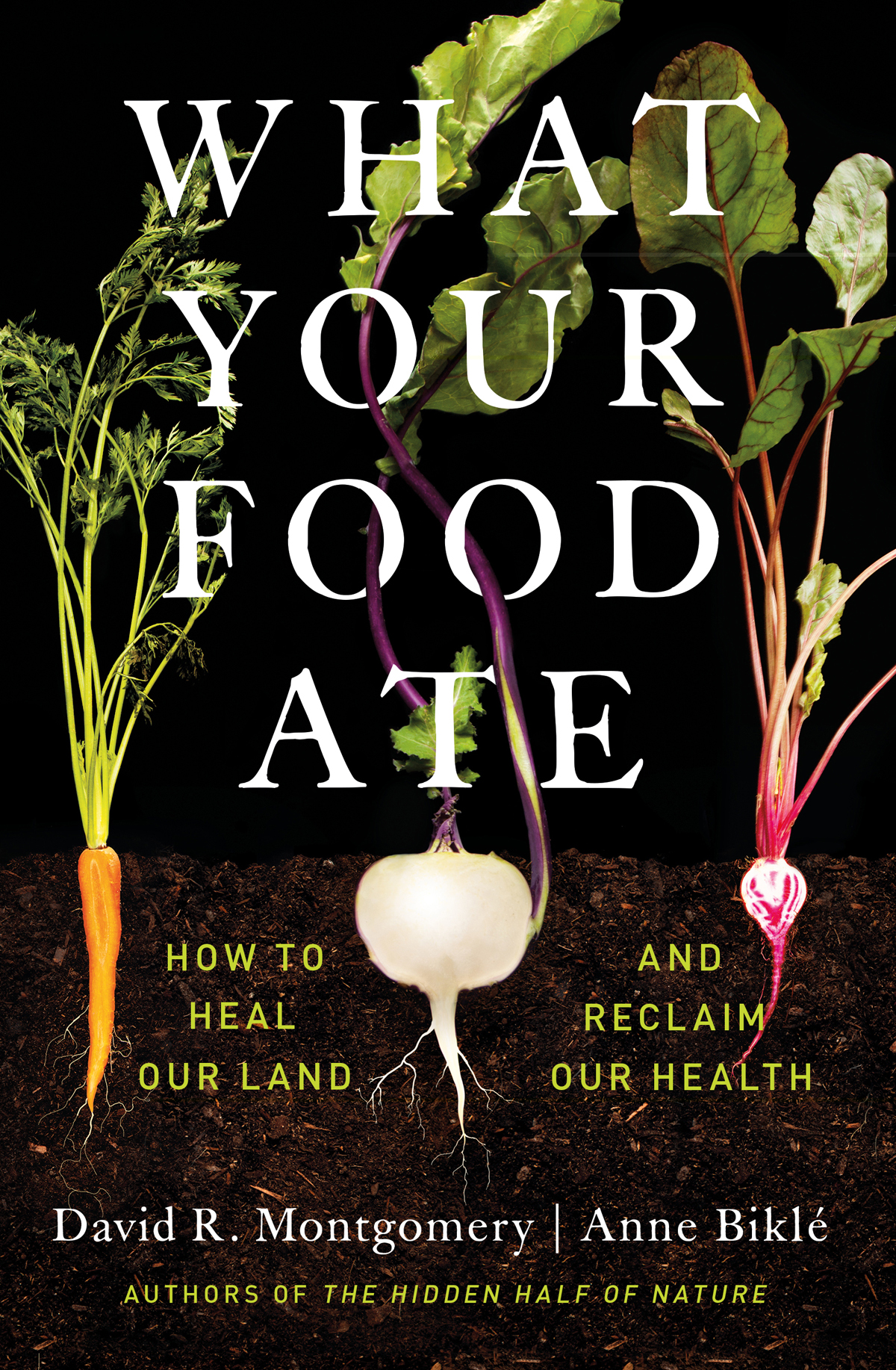Contents
Guide
Page List

How to Heal Our Land
and Reclaim Our Health
DAVID R. MONTGOMERY
AND ANNE BIKL
For the farmers, scientists, and eaters around the world dedicated to bringing life back to the soil.
CONTENTS
M ost of us dont think about the soil when we sit down for a meal with friends or family. But we should. We all know that a fresh pear is healthier than a pile of salty potato chips, but it is all too easy to lose sight of another dimension to our health: whats in that pear and how it got therehow we grow our food.
In a world awash in clickbait headlines about what to eat and what to avoid, few know that the typical grocery store carrot now contains less zinc than those our great-grandmothers served their kids, or that the beef sizzling on the barbeque probably packs a lot less iron than what our grandparents ate as children. Reports of troubling nutrient declines span the human diet, from fruits and vegetables to grains, meats, and dairy. And while what we mostly hear in arguments over the future of agriculture centers on differences between organic and conventional farming, the real story is not that simpleand far more interesting.
Over the past century farming practices have changed food in ways that reduced levels of beneficial compounds in our diet, ranging from those in fruits and vegetables that help prevent cancer to fats in meat and dairy that modulate inflammation. Too many of us have never heard of fats that are good for us or know that our health suffers when we dont get enough plant-made phytochemicals in our diet. Yet when it comes to lifelong health, an adequate supply of such compounds appears as fundamental as getting enough exercise.
There is no shortage of opinions about what we should eat. People argue endlessly, for example, over whether we should eat less meat, more meat, no meat, or meat that isnt meat. Whats typically missing from the framing of dietary choices is how we grow what we eat. The way we raise our crops and livestock proves as important as what we choose to eat.
Were still learning how soil life helps plants grow and influences the things that end up in their bodies and thus in our bodies. What role does better soil play in growing a better peach or carrot? If we want the healthiest food, is organic farming good enough? To answer such questions we need to examine the long-running relationships that all plants develop with a vast menagerie of soil life. You may have heard about the importance of our microbiome, particularly the gut microbiota that dwell in our colon and transform what lands there into compounds that benefit our health. Similarly, the tiniest soil dwellers influence crop health. And whats true in the human body holds true for soil too. Routinely killing off or disrupting microbial partnerships rarely benefits the host.
Soil is the starting point for foods that come from the land, and a groundswell of evidence, observations, and research points to an underappreciated factor contributing to food qualitythe health of the soil on farms and ranches. As well share in the pages ahead, a substantial body of evidence shows that the state of the land influences the health of crops, for better and worse. And the nutritional quality of the pasture, crops, or rangeland that livestock eat strongly influences their health. But does soil health affect human health as well? How much does what your food ate matter to your health? Like beads on a string, we can connect the way farmers treat their soil, grow crops, and feed their livestock to what fills our plates, glasses, and bodies.
How we treat the land affects how it, in turn, treats us. Key pillars of todays conventional agricultureroutine plowing and liberal use of chemical fertilizers to grow relatively few high-yielding cropshelped drive the twin problems of degraded soil health and declining nutrients in food. Over the past century our food lost mineral elements we need in trace amounts, like copper and zinc, and others we need a lot more of, like calcium and magnesium. Today, youd have to eat several apples a day to keep that proverbial doctor away.
These changes didnt happen by design as much as by oversight and a single-minded focus on quantity. Weve learned a lot in recent decades about the ways crops acquire or get shorted on minerals and other nutrients and compounds important for our health. Out-of-sight, belowground communities of symbiotic soil bacteria and fungi work as a nutrient acquisition and intelligence service for plants. And it turns out that farming practices shape these communities and thus the types and amounts of health-promoting minerals, fats, and phytochemicals in our crops, meat, and dairyand ultimately in our bodies. But the go-to practices of mainstream agriculture disrupt the soil microbiome, unleashing modern farmings chemical treadmill. The more farmers come to rely on synthetic inputs instead of beneficial soil life, the more they need the formerand lose the latter.
Fortunately, as well see, there are practical, cost-effective ways for farmers to cultivate soil life and harvest healthier food. But doing so requires thinking differently about the soil. In coming chapters youll meet visionaries who long ago foresaw that losing soil life would seed a downward spiral toward less nutritious food and less healthy people, and youll read about innovative farmers bringing their land back to life and nutrition back to their harvests. This is a story about the way health flows to us from the land. It matters how we farm, and we neednt choose between whats healthy for the environment and for people. We can feed ourselves in ways that build and safeguard the health of both the land and our bodies.
Regenerative farming practices can help stop soil erosion, enhance soil health, and build up soil organic matter (soil carbon). They are catching on among American farmers, allowing them to slash spending on fuel, fertilizers, and pesticides. In effect, farmers who adopt regenerative practices find they can rely on biology to replace most of what they used to buy from agrochemical suppliers. At the same time, consumer demand for more sustainable products incentivizes a growing list of companies integrating regenerative farms into their supply chains. But do these products really prove better for our health too? Does science back up claims of better food from healthy, fertile soil, and if so, what could regenerative agriculture mean for human nutritionand public health?
We tend to think of diet-related ailments as arising from deficiencies in particular nutrients. Take scurvy, for example. If you start consuming vitamin Crich citrus, scurvy clears right up, as British naval surgeon James Lind demonstrated in a famous 1749 medical trial aboard HMS Salisbury. Some cures are this simple. But curing other types of ailments and maintaining good health in the first place are far more complex. And on this point, the mix of foods in the human diet matters because phytochemicals, minerals, fats, and other compounds in food interact synergistically. And the fact that farming practices influence all of them leaves us with an unsettling question. How good, really, is modern agriculture for our health?
Of course, were not arguing that food grown in degraded soil is the cause of all the worrisome health trends humanity faces. To be sure, our healthgood, bad, and in betweenreflects a constellation of interacting factors, from our genes, diet, physical activity level, and microbiome to personal and maternal exposure to toxins and pathogens in the environments where we live, work, and play. Also, the dramatic rise in the onset and types of chronic diseases over the past century is partly attributable to more comprehensive diagnosis and monitoring. But given recent advances in our understanding of the human immune system, as well as in our healing and aging processes, its time to take a fresh look at whether mainstream agricultural practices fill our crops and livestock with all our bodies need to support robust health.


